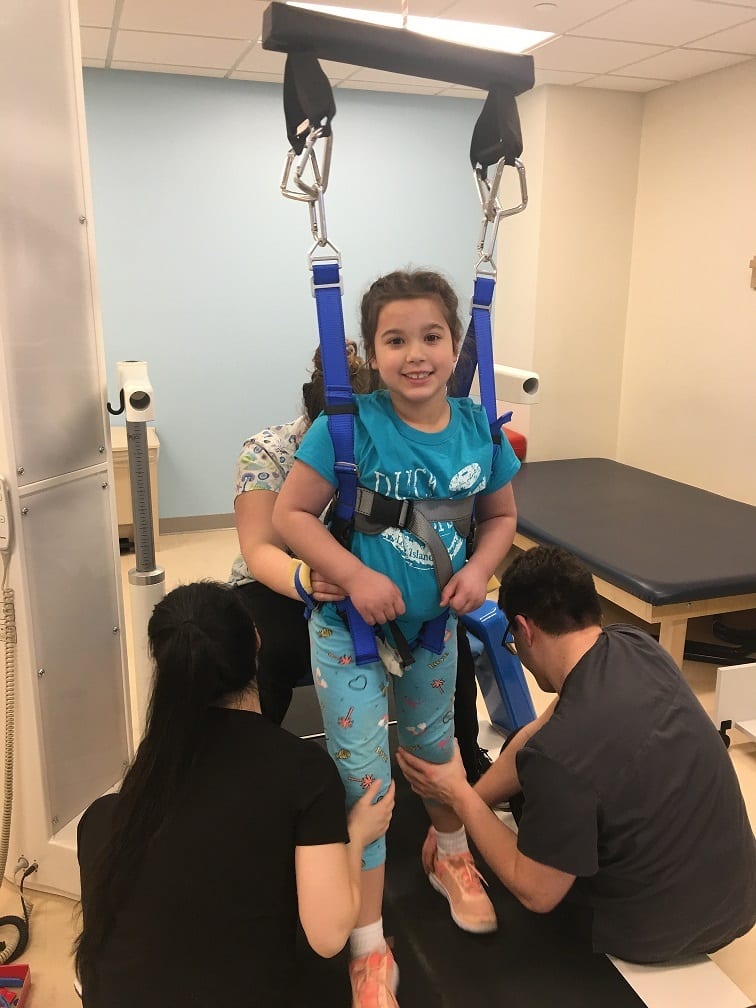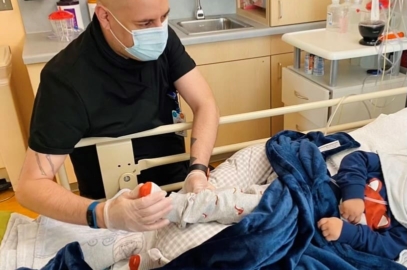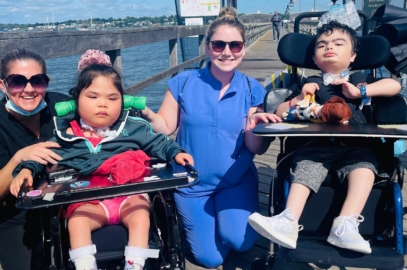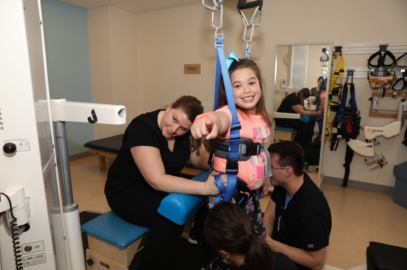April 22, 2019
Acute Flaccid Myelitis (AFM) is a rare, serious condition that affects the spinal cord and the nervous system. Since 2014, 90 percent of the new cases of this polio-like disorder that leads to sudden paralysis have developed in young children. At St. Mary’s Hospital for Children, we are on the front lines of innovative technologies and rehabilitative techniques that can change the lives of kids with AFM.
We are one of only three hospitals in the United States and the first in the Northeast to offer locomotor training, an innovative approach to rehabilitation that can help kids with AFM and other spinal cord disorders or injuries to move, play and even walk.
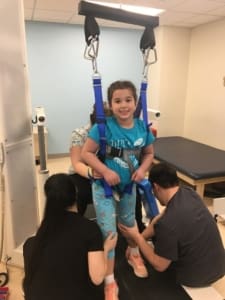
Emma is one of St. Mary’s Kids who has benefited from locomotor training. She was only 6 years old when she suddenly developed acute flaccid myelitis, leading to the complete paralysis of her left leg. Locomotor training has given her new opportunities to reach milestones that have helped her to improve her leg’s function and become comfortable again in her body.
What is AFM?
While most new cases of AFM affect children, people can develop the disorder at any age. AFM affects the gray matter of the spinal cord and causes muscles and reflexes to weaken. In most cases, children experience a sudden loss of muscle tone and reflexes in their legs or arms, accompanied by weakness. While some children experience pain, others simply lose their reflexes and muscle tone. In some cases, kids with AFM also have difficulty moving their eyes, experience facial weakness or have trouble swallowing.
An upswing in reported cases of AFM, particularly in children, has sparked the Centers for Disease Control (CDC) to investigate the causes of AFM. Because the symptoms of the disease are similar to those of polio, researchers have looked for a poliovirus that could be responsible, but have found no link. However, many children who were diagnosed with AFM had symptoms of a respiratory virus before the development of symptoms, so researchers believe that the disorder is connected to a virus.
Children with these symptoms should seek medical care immediately. While in some cases AFM symptoms dissipate on their own, in other cases, children require significant support in order to help them move or even breathe. Parents of children with AFM are well-placed to advocate for their children and help them get the treatment that they need. AFM is diagnosed by examining a child’s nervous system and the location of weakness and poor muscle tone in the body. In addition, your doctor can perform lab tests or an MRI to examine the brain and spinal cord to differentiate acute flaccid myelitis from other neurological disorders.
Locomotor Training: Innovative Rehabilitative Therapy
There is no specific treatment or cure for AFM, but there are rehabilitative techniques and technologies that can make a significant difference in the quality of life for children with this disorder. Locomotor training is an intensive form of rehabilitative therapy that can be performed on both an inpatient or an outpatient basis. Children as young as 5 can benefit from locomotor training, as can teenagers and young adults.
This individualized therapeutic program can help kids with AFM to improve their function, helping them to sit upright, stand and walk. Locomotor training takes advantage of what we know about the brain’s neuroplasticity to help children make new achievements in mobility and walking. From studies performed on adults, we already know that locomotor training can improve the performance of cardiovascular, respiratory and musculoskeletal systems.
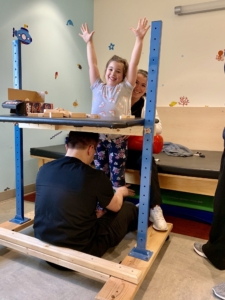
How Does Locomotor Training Work?
Locomotor training is activity-based and works to help the neural circuits of the brain relearn an activity after an injury or illness. Every child with AFM who comes to St. Mary’s Hospital for Children receives an evaluation by therapists and other skilled clinicians and a unique, individualized plan for locomotor training. This therapeutic rehabilitation treatment includes 90-minute sessions five days a week, with an initial minimum of 60 sessions of treatment. The program involves different types of therapies; 60 minutes are spent in body weight supported system on a treadmill and 30 minutes on other functional movement activities.
During step training, children with AFM are suspended in a supportive harness over a treadmill, while St. Mary’s therapists move their legs to simulate walking. This treatment is designed to help the nervous system reassociate motor patterns of walking after a spinal cord illness or injury like AFM. The pattern used for stepping and the contact of the feet with the treadmill help to provide new information to the brain and spinal cord about movement. Through the use of locomotor training, kids can experience various improvements to help restore some of the function that was lost to AFM. Of course, every child has a different experience with rehabilitative therapies, but this innovative option can help kids to access some of the most advanced treatments available for spinal cord injuries.
Helping St. Mary’s Kids Grow and Learn
Locomotor training is exactly the kind of therapy that St. Mary’s Hospital for Children exists to provide for all of St. Mary’s Kids. As New York City’s only pediatric post-acute facility, we specialize in the care and treatment of children with special healthcare needs and medically complex conditions like AFM. Locomotor training is part of our mission that helps children to heal, grow and become more independent, including assisting children to socialize, play and live their best life as kids.
